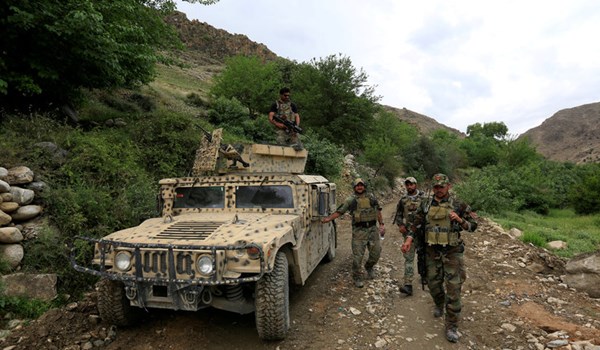
RNA - Coats has also warned the Senate that the situation in Afghanistan is not just getting worse, but will continue to worsen irrespective of which option War Party Washington chooses.
That hardly seems to fit a situation in which the end game is - as the Pentagon regime with its generational thinking and Coats with his “through at least 2018” suggest - hardly in sight. In fact, at a time when the Afghan government may control less than 60% of its territory and its security forces are taking staggering, possibly unsustainable casualties, the terrorist groups, not the US-led coalition, seem to have the momentum.
The plans the Pentagon have offered reportedly include either sending 5,000 more troops to Afghanistan, or leaving troop levels flat while focusing on protecting “high-value targets.” Coats insists the “modest” escalation wouldn’t change things. On top of that, he has warned that Afghanistan would remain heavily dependent on the international community “until it contains the insurgency or reaches a peace agreement with the Taliban.”
In recent months, there’s been no sign of either happening, which likely explains the grim outlook into the foreseeable future. All we know is that the Pentagon’s escalatory plans are in favor of a permanent war, with the plans to send more US ground troops to the country.
Nothing in this is risk free. It ignores the mounting civilian casualties and the reality that the war is lost, and irrespective of troop levels, has been for a while:
- America’s war on Afghanistan is now in its 16th year, the longest war in US history. After all these years, it doesn’t take a genius to know that something about US strategy hasn’t been and isn’t working. The phrase “no end in sight” barely covers the situation. Prospects of “mission accomplished” are arguably more tenuous today than at any point since the US military invaded in 2001. Such “defeat” has, over the years, invariably proven “irreversible.”
- It is silly for the Pentagon regime to argue that its “generational war” has been “successful” because no major attacks on the US have had their roots in Afghanistan since September 11, 2001. This qualifies as one of the strangest definitions of “success” in a criminal war that lacks legality and justification. No Afghan national or migrant has ever carried out terrorist attacks on the US.
- The US war on Afghanistan is not a different kind of war. American occupying forces are doing to Afghanistan what they have been doing to other regional states for years: Asymmetric conflicts involving non-state actors, worsened by the meddling of regional allies like Saudi Arabia, Qatar, Jordan, and Israel. Further still, war-party Washington doesn’t see its military presence in Iraq, Syria, and Yemen as foreign occupation, let alone a laboratory of state-sponsored terrorism. Here, there are far higher troop requests too. Escalation, a few thousand more troops, and a litany of “more” have failed to yield sustainable results - driving the very convergence of terrorist forces the US claims it is seeking to avoid.
- All signs point to more of the same in Afghanistan, where the US won’t be able to impose an external solution on Afghans. War-party Washington has been losing the war, and will continue to do so, no matter how it fiddles with troop levels, regional games, and international laws. If past is prologue, President Trump will also end up approving the escalatory requests, in part because the Pentagon regime and the Military-Industrial Complex are so financially and professionally linked to America’s permanent war on Islam.
“More” after all, remains the option of choice for the War Party in Washington, where greatest foe has always been self-deception. The long-suffering peoples of Afghanistan, Iraq, Syria, and Yemen don’t want Washington’s endless wars of deceit and occupation. They don’t want Washington to meddle in their domestic affairs either. Director of National Intelligence Coats is right to say the war on Afghanistan is in a stalemate. But he is wrong to assume that the only way to break that stalemate is to give the Pentagon generals more combat troops and grant their wishes.
For those Americans still in uniform, a better option for the US occupying forces is to pack up and leave. Until that happens, the danger is this: If the War Party boxes Trump into an escalatory corner, and if he favors a “more” decision, then the almost certain outcome of this military worship, this bureau of violence, will be an increase in US and Afghan casualties without any strategic impact on the outcome.
As a consequence, the failed war will go on without end or purpose, and the situation will continue to worsen irrespective of which option the US chooses. This includes “bogus” options such artificial deadlines, strategic partnerships, establishment of additional organizations, refinements of strategy, additional resources, the right “inputs” provided by Trump, as well as more troops, more airstrikes, more bases, more money, and more time.
847/940